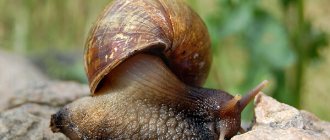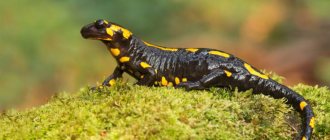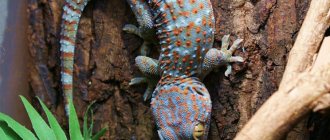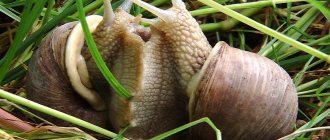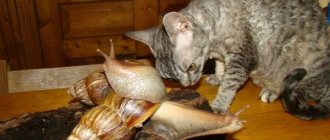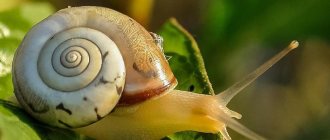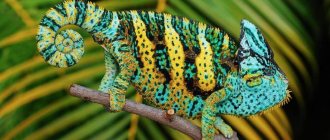- Exotic pets
The exotic iguana lizard looks impressive and beautiful, especially for our cold latitudes, but the desire to acquire such a pet often ends at the planning stage of arranging conditions for the reptile. Many people are concerned about how to care for an iguana at home, because this animal is accustomed to the hot and humid climate of Central and South America. Moreover, the question of a specific diet also remains open, since providing proper nutrition to a tropical lizard is not so simple, and the question of what to feed an iguana at home is quite acute. In this article we will try to answer most of the questions about this animal, as well as help you choose a healthy iguana as a pet.
How to choose an iguana?
First of all, you need to remember that iguanas are only born in May and June. For this reason, if you want to become the owner of a 2-month-old pet, it is best to go to the store at the end of summer. You cannot count on the fact that a 2-month-old iguana can appear in January, since this is contrary to natural laws.
Sellers cannot correctly determine the gender of a pet. A domestic iguana will certainly delight you with its presence, but it is advisable to understand that the correct sex will only be determined during puberty of the pet, so you will have to wait another year and a half for this wonderful moment. Professionals can answer the question regarding gender at 7–8 months by conducting special tests, but the answer cannot be provided earlier.
So, what is the best way to choose an iguana to ensure a worthy purchase?
- It is imperative to examine your pet's mouth. It is best to take the fry with your right hand, and then slightly pull the edge of the throat fold with your left hand. A light pink mouth will indicate good health, and the tongue should be reddish. Warning is caused by a very light or grayish-lilac tint of the oral cavity, since such changes indicate a lack of calcium that needs to be replenished. Other colors indicate serious illness.
- It is mandatory to carefully examine the limbs and fingers, which cannot be swollen or swollen. Lack of claws is remediable, as claws can gradually grow back if there is no serious damage.
- It is recommended to carefully examine the skin of the fry to make sure there are no spots or spots indicating the presence of a serious disease.
- Inspection of the comb and the tip of the tail is a mandatory step. Dark color or dryness is undesirable. However, your pet's comb and tail tip can be improved with proper care.
- It is recommended to have stool tested to ensure that the iguana is free of helminths or to find out about their presence. Getting tested is an important task not only for the pet, but also for its owner.
Size and lifespan
Large lizards can reach a maximum size of 1.5 meters in length and weigh more than 9 kg. Moreover, males are larger than females, which rarely reach a size of 130 cm. Also, a sexually mature male green iguana has a larger crest on his back.
With good care, a domestic green iguana can live 15 to 20 years in captivity.
Fruits fortified with calcium
Fruits high in calcium should make up the remaining 5 percent of the diet. The best fruits to offer include:
- Grape
- Papaya
- Mango
- Raspberries
- Figs
Other fruits that may sometimes be offered include:
- Apples
- Plums
- Peaches
- Blueberry
- Melons
- Pears
- Cranberry
- Tomatoes
- Kiwi
- Guavas
- Strawberry
- Bananas
Iguana food
Feeding an iguana is not that complicated; it is important to correctly calculate the amount of food the animal needs. This “small” lizard is a real vegetarian who eats nothing but grass and vegetation. By the way, it is this factor that is decisive when choosing between an iguana and a chameleon, which, in fact, is also a relative of lizards. In the wild, it eats young leaves of fruits and flowers, but at home it can be fed with other foods. You can give your green dragon fruits, cut vegetables, and lettuce. She will certainly be happy about this, but until she is 1 year old, you can give her a small amount of protein, then she will grow much faster. This may be chicken meat, or canned dog food, but, I repeat once again, protein should be given in small quantities, and only up to one year. You should not give citrus fruits such as tangerines, oranges, grapefruit. However, you can give the leaves of these fruits if you have access to them. In the spring you can give her cat grass. This is such a thin green grass that grows in every yard; cats eat it to cleanse the body of toxins. The iguana also loves this grass. If you don’t want to take risks and don’t want to feed your miracle animal anything, then zoological stores sell special food for iguanas, although, I repeat, it can eat cabbage, lettuce, and apple leaves after you.
She should be fed several times a day, usually twice. It may be that the iguana does not accept a certain product, then you should replace it with another, and no longer give it what it did not want to eat. If the iguana is hungry, it may attack you, so do not let it go hungry, otherwise your hands will get bitten. Also, do not scare her, she may attack. But, despite this, the iguana is a rather peaceful animal that has already adapted to such living conditions.
Important aspects of caring for an iguana
To ensure the maintenance of this lizard at home, it is necessary to create special conditions. Terrarium. The conditions in it should be as close to natural as possible. Temperature is 28-30°C during the day and 22°C at night. Humidity level is about 80%. Lighting. The iguana needs a sufficient amount of ultraviolet light. The change of day and night is also very important for this animal. Provide approximately 12-14 hours of light and 10-12 hours of darkness every day. Feeding. The diet for an iguana is approximately as follows: 30-70% of the diet is leafy plants and vegetables, 5-15% is fruits and up to 10% is additional products, for example, grain complexes. Please note that it is strictly forbidden to feed your lizard with leftovers from your table - this can have a detrimental effect on its health. Bathing. You can and should bathe your iguana. The optimal water temperature is 30-35°C. Twice a week is enough, but more often during shedding season. Appeal. Due to the obstinate nature of iguanas, they must be handled very carefully. Take her from above near the forearm, with the other hand pressing her hind legs to her body. But it’s better not to touch the tail - she can throw it off, and then it will be much more difficult for her to keep her balance and climb the branches. When releasing the iguana from the terrarium, make sure that it does not disappear from view for a long time. By providing the iguana with appropriate care and attention, you will receive not only an exotic animal, but also a devoted friend in the person of your beloved pet.
Is it possible to have crackers?
As mentioned above, dry food can be added to the diet of adult reptiles. It contains a high concentration of calcium, vitamins A and D3.
However, the owner independently decides whether to offer such food to the pet. Freeze-dried food contains a lot of phosphorus, which the animal gets in sufficient quantities from fresh food, and it also lacks fiber and water. In addition, low-quality food contains compounds that are dangerous to animals, such as acidogens and purines.
Uncontrolled and unbalanced intake of dry food can lead to dehydration and kidney disease.
Terrarium: size, arrangement, temperature, humidity
- The richest animals
- Cat claw attachments
- Dog
- Long-eared cats
- Cat meowing
- Alexandrian parrot
At home, the iguana is kept in a terrarium. You can take it out from there for communication, swimming, walking, but its main place of residence is the terrarium.
It is in it that it will be possible to maintain the necessary temperature and humidity for the iguana; under normal room conditions the animal will not survive. The iguana grows up to 1.5-2 meters in length, so the “house” must correspond to its size, and it must move around it calmly.
In addition, the terrarium should have three areas with different temperatures: in one corner (side) there is a place where the lizard warms itself, where the temperature should be about 30 degrees. Usually, a branch or snag is placed for the iguana, along which it climbs to the lamps and warms itself there - the first thermometer should be placed in this area. Heating is regulated by the power of the lamps; very powerful lamps that heat up during operation must be covered with a metal mesh to prevent the lizard from getting burns. Regular lamps can be used, but it is better to use UV lamps.
The second thermometer is placed in the same warm area, but at the bottom or diagonally from the lamp; it should show an average temperature of 26-27 degrees. And the third is placed in the farthest cool corner - there should be at least 25 degrees.
A quarter of the area should be given over to a pond - the lizard can drink from it, and it also maintains the required humidity..
The bottom is lined with a mat, paper napkins are placed on top, and a thick, large bark is placed on them. The napkins are replaced daily, the mat and bark are washed with warm water. The water bowl is cleaned twice a week, and once a month the terrarium is thoroughly cleaned and disinfected. The iguana does not tolerate a lack of water well, so along with a swimming pool, it is wise to put a regular drinking bowl in the terrarium and change the water in it every day.
Taming
How to tame an animal like an iguana? At home, this reptile will be happy to frequently communicate with its owner. Contact with the pet involves feeding and bathing. To teach an animal to trust a person, you need to regularly hold him on your arms and shoulders. Keeping an iguana requires devoting a significant amount of time to it, so before getting such a pet, you should adequately weigh your options. Veterinarians warn: despite the fact that an iguana at home quickly gets used to a person, it can bite. Therefore, care should be taken when handling it and, if possible, wear leather gloves.
Northern summer resident - News, Catalog, Consultations
In recent years, iguanas have become one of the most popular pets and perhaps the most affordable reptiles. A rough analysis of the reptile market suggests that at least 10-15 thousand young iguanas annually fall into the hands of domestic animal lovers. Considering that under the right conditions, iguanas can easily live for more than 15 years, it would be easy to assume that they should become as common as dogs and cats. But an adult iguana is a rare phenomenon, causing surprise and curiosity. The reason is the difficulty of keeping these animals, which, contrary to the claims of pet traders interested in selling them, is not at all easy. Iguanas do not live “like dogs.” In addition, keeping an iguana is quite expensive. Unfortunately, most novice lovers of reptiles, especially iguanas, do not delve into the details of their biology and maintenance until the animals begin to need the help of a veterinarian. Most often this happens quite quickly, but inexperienced owners do not always pay attention to the health of the iguana in time and consult a doctor too late, when it is not possible to save the animal.
Acquisition
Purchasing any animal is a responsible and complex matter; with reptiles it is still much more problematic: firstly, there is no qualified and comprehensive literature on the maintenance and care of these animals, and secondly, there are very few high-quality terrariums and craftsmen who make them. So before you buy a lizard you need to prepare thoroughly. First, you need to understand one thing: an iguana is the same living creature as a cat and a dog. And immediately remember the two main reasons for the death of these creatures: improper feeding and non-compliance with the temperature regime. There are a number of other difficulties, but more on that later.
First, let's talk about temperature.
Maintaining the desired temperature depends on the quality of the terrarium and the heating and lighting equipment. You also need to take care of air exchange and constant humidity (do not forget that the iguana is a tropical animal). It is important that on the branch installed in the terrarium under the lamp it is 31-35°C, and in the corner away from the lamp - 25-26°C. It is impossible to say in advance what lamp power will be needed; it all depends on specific conditions. In some apartments the temperature does not drop below 27 °C all winter. Therefore, stock up on three thermometers (to measure air temperature) and place them as follows: one should be on a branch under the lamp, the second should be at the same level at the maximum distance from the lamp, and the third should be at the bottom of the terrarium in the coldest corner. By changing the power of the lamps, you should ensure that the first thermometer shows 31-35 °C, the second 27-28 °C, and the third - at least 25 °C. If you use lamps with a power of more than 40 W, they must be insulated with mesh to avoid burns. These temperature parameters are ideal for the iguana's daytime activity. Now it can warm up and cool down without freezing or getting burned. In addition to heating lamps, lighting lamps should also be installed, for which ordinary LB-20 daylight lamps are suitable, but it is optimal to use special ones that have UV in their spectrum.
Behavior
A tamed iguana will behave calmly, but not sluggishly - it will strive to climb up your arms onto your shoulder or head, hold on tightly and resist disturbing actions without showing aggression.
A wild but healthy iguana will try to get away, sometimes trying to thrash its tail, or even open its mouth, trying to bite. You should hold such an animal in your hands carefully so as not to injure yourself or injure the lizard - powerful attempts to break free from wild animals can lead to fractures.
Sick iguanas may try to escape, but they are weak and after a while, having exhausted their reserve of strength, the lizard freezes with its eyes closed.
Young iguana
Iguanas grow very quickly; in 2-3 years they can increase their weight by 5-6 times.
With such growth, a young animal needs feed additives with a high calcium content. If the concentration of calcium in the blood is lower than necessary, this will cause growth to slow down or even stop; the bones of such an animal are poorly developed and curved (this is especially noticeable in the tail, it becomes crooked at the base , and sometimes tortuous along the entire length), which not only disfigures the appearance and affects health, but also leads to frequent fractures.
Often one has to deal with a common mistake - the owners give calcium gluconate, chalk or crushed shells in large doses. It would seem that calcium is in its pure form, everything should be fine. But the lizard does not grow, eats poorly, and its tail and paws gradually become bent. What's the matter? In small ways. Calcium absorption in the body occurs only in the presence of vitamin D3. This vitamin is formed only under the influence of ultraviolet radiation, more simply - sunbathing. Otherwise, there is no vitamin, there is no absorption of calcium, and you can feed your iguana with spoons of gluconate - it will pass through in transit without remaining in the body.
With proper feeding and care, the weight and body length of an iguana from a newborn to an adult animal changes approximately as follows:
Newborn iguana - body length 8-11 cm, weight 10-12 g.
Growth in the first 3 months is 0.6 mm per day.
Growth for 9 months - 0.4 mm per day.
Iguana at one year of age - body length 22-25 cm, weight 340-460 g.
Iguana at 2-2.5 years old - body length 33-40 cm, weight 1200-1400 g
Iguana at 3-5 years old - females body length 33-38 cm, weight - up to 2800g
Males - body length 38-46 cm. Weight up to five kilograms!
Feeding
The reptile is a herbivore, its digestive system is like that of all herbivores, it needs roughage food to normalize the digestive process
Leading herpetologists recommend giving the diet in the following percentage ratio: 30-70% - vegetables, 30-70% - greens, 5-15% - fruits, 0-10% - possible additions of other products - grains.
These ratios do not mean that you can limit yourself to a diet like: 50% carrots, 40% cabbage and 10% apples. It is not that simple. Ideally, if you offer at least 10 different products in your diet, this will ensure that the lack of some substances, say, in a salad, will definitely be compensated by a large amount of them in the leek. The diet should be varied!
When to feed
Iguanas must receive food daily. This is especially true for young animals!
But, you can give food to an adult iguana every other day or even once or twice a week, it will not die from it (at least quickly). But it will never have the appearance of a real iguana - bright, smooth and calm.
Water
Like most animals, iguanas need water. These lizards are able to endure long hunger strikes, but quickly die if deprived of water. It is important to ensure a constant supply of clean water. It is better if it is not just a small drinking bowl installed in a terrarium, but a small pool (a deep ditch or basin is quite suitable - depending on the size of the lizard), where the iguana can lie down, cooling down from the too high temperature under the lamp. Iguanas often use ponds to defecate. Given the high temperature in the terrarium, the pond can quickly become a place for rapid growth of bacteria, so the water must be replaced daily and the container disinfected with a sponge and soap. Just because you don't see your iguana drinking is not a reason to leave dirty water. Indeed, iguanas get up to 90% of their water from succulent food and therefore drink less than we do. But they do this regularly, especially on an empty stomach.
Shedding and skin care
Like all reptiles, iguanas molt periodically. The difference between molting in iguanas and many other reptiles, such as snakes or geckos, is that molting does not occur simultaneously throughout the entire body, but gradually and for quite a long time. Iguanas begin molting from the head and end with the tail. This can last a month, or even longer.
Character types
In the actions and deeds of a calm iguana, traits similar to those of humans often appear. To understand what an iguana is, imagine it as a small person, but one that is much more sensitive and sometimes paranoid. All iguanas are different, just like people. This is clearly evident when you live with adult iguanas that roam freely around the house. Each and every iguana has its own special, unique personality, I'm not kidding! Some iguanas will remain scared and psychotic, while others, who are potentially CALM TYPES, may (sooner or later) behave as well as if everything they do is the result of perfectly “trained” behavior. Until you see for yourself how normal and reasonable a calm iguana behaves, you will not believe the sophistication and grace they possess.
Development
There are several characteristic traits that an iguana can develop, but these tend to emerge as they grow. If the iguana has potential, the more characteristic well-defined pet traits will emerge if the iguana is in an environment that makes it feel happy and safe. Feeling safe is the key to her good, good behavior. You can only hope that it will become a calm individual. The iguana's inherent personality and sensitivity cannot be "enhanced" or "trained" to change its essence. When you buy an iguana, you are buying a personality that may have a nasty or very sweet temperament, or a combination, or maybe a skittish or just gloomy character, or a very independent and unsociable character, or a crazy biting and tail-fighting character, or maybe a funny self-centered one, or curious and friendly personality, or something in between.
A baby iguana is not the same as a juvenile iguana or an adult iguana. They change, they develop, step by step, just like people. Changes will go in the direction of the iguana's inherent character. Like a caterpillar that turns into a butterfly or moth, you cannot change or “train” that transformation in a direction other than what nature intended. A baby can be perfect and excellent and then turn into a less than ideal wild monster! Some personality changes may last for short periods of a few weeks and then return to normal. A change of environment (room or home) can lead to big changes in behavior (good or bad).
Wait and watch
It is difficult to be sure what an iguana's personality really is until it matures. Personality traits usually get better (sometimes worse) as the iguana develops during the first five years. It's like a gamble when you buy a small iguana, because some will turn out to be wonderful, some will be good, and some will turn into absolutely disgusting, terrible pets. No matter how good or bad an iguana is, you cannot prevent its position and individual characteristics from becoming the way they are inherent within it. With a small iguana, you can observe signs of its physical health, while character signs are only subtle clues and will not always be a guarantee of what it will be like when it grows up. If you are purchasing an ADULT iguana, then what you see is what you get and you will spend a few minutes or hours handling it and observing its behavior. How you treat your iguana when you raise it is still important, but is secondary to its personal nature. All the caressing and care that you have ever provided will not leave a mark and will not change the hypersensitive, timid or completely independent iguana. Calm types will be calm by nature, being provided with a calm, safe environment (one that is safe in the iguana's opinion). Keep in mind that a cage, aquarium, or other things can sometimes instill fear and alarm in some iguanas. Make sure you and your iguana are safe and comfortable, but be prepared to make adjustments. Remember, the iguana undergoes changes, there are different moods. Sometimes temporary, and sometimes permanent.
Fear or Trust
Once the iguana has established an internal feeling of confidence, security and safety, the rest will come easier. You must clearly understand that this “feeling” appears gradually, and pure fear will not suddenly change to pure security, these changes happen gradually, step by step or moment to moment. I have never "trained" an iguana. Healthy behavior around people (other than the owner) comes naturally to some iguanas, but not to all "calm" iguanas because some will only be calm around strangers at home and not anywhere else.
An iguana can potentially live comfortably with friendly animals and people when given the right environment. However, she is essentially a VERY SENSITIVE creature and can easily feel overwhelmed and live in fear or rage. If the iguana doesn't get rid of the fear (it doesn't get out of its head) and doesn't develop an attitude of some TRUST (belief in its safety), it will most likely be a pitiful, unhappy pet.
Tolerance
It makes sense that an iguana would be afraid, especially of a giant human species. The iguana may or may not be able to "take a step", trust, relax and enjoy the comfortable conditions you provide it. A calm adult iguana will not react with a sudden panic attack like other more sensitive, fearful types. Don't take it personally. If they are scared or see you as a challenge, they will not behave well in this state and may run away, swat their tail, or hide. If fear takes hold of the iguana and it does not subside, this is a real problem for the owner and the iguana. It will take two or three years before you truly find out what this pet is like. Fear will dominate her personality and only push her to react to everything in a panic. Fear will interfere with the pleasure of calm or healthy behavior. If an iguana lives in fear, fear dominates it and completely influences its perception of the world. Her gaze deceives her, and when you try to do something friendly, she only sees it as a threat. The iguana may respond by lashing its tail, hissing, or running toward walls, glass, or anything else.
Intelligence
As my iguanas matured, they behaved in ways that some people thought required training. These iguanas have developed confidence and experience by observing and becoming familiar with the things, places, animals and people in my home through the eyes of a CALM iguana. I never expected any intelligent behavior from iguanas, “lizards.” One day I decided to let one of my adult Igs (3-4 years old) out in the backyard for some regular sunbathing. I let him roam around to see what he would do with a little freedom. Ig walked towards the house, instead of running to one of the trees or bushes that surround the yard. He then climbed the stairs that lead into the house. He just “knows” where his house is, and walked past the dogs, carefully up the steps and straight into the house. Then Hasbro walked importantly through the kitchen, made the right turn into the bedroom and climbed onto the familiar furniture that he knows as his place of rest and sleep. Since they are neither cats nor dogs, we assume that they do not have intelligence, but they do have it. Over the years, other adult iguanas made the same intelligent maneuvers to return to the house, and were never tempted to escape or wander anywhere. I found that even if the back door of the house was closed, the iguana would walk around the house and try to enter through the front door!
I recently took Hasbro (my best, favorite iguana) (for the first time) to a large empty parking lot to sunbathe. He decided to get out of the car and walked around the parking lot in a large circle. For a moment he got scared when he saw a boy playing basketball in the distance. I'm sure basketball must have been a mind-blowing experience for Hasbro. However, Hasbro remained unfazed and ended his walk through the concrete parking lot. He walked straight to the car, climbed onto the rear bumper and climbed inside “his” car. Since then he has done this every time. A “lizard” that can get back into the car always impresses me. Everything these iguanas do shows different forms of intelligent behavior. Most males have developed a standard smug ego, thus signaling challenge and dominance to other males and females. My most mature and calm iguanas lived in social harmony with dogs, squirrels, birds, other lizard species, and people.
Self confidence
For an iguana owner, the most important quality of a pet is how much confidence it will have. Confidence is the key to relaxation, trust and acceptance of your surroundings. Only when the iguana is relaxed and not scared will it be a real pet. However, there are always exceptions. However, on average, they can range from being really sweet, wholesome pets to being challenging and wild based on their level of fear. They tend to become quite cute in one way or the other, feeling confident or scared, one or the other, with constant fluctuations and changes in the more sensitive, fearful iguanas. Even a CALM iguana maintains a sensitively high state of alertness to danger or competition. The difference is that a calm iguana does not react or panic as easily or quickly as an overly sensitive one. A calm iguana notices everything that happens, but since it is not filled with fear, it is able to recognize when people or animals are friendly. The fear that some iguanas have can prevent them from developing confidence and even a sense of ownership over their territory. In a state of less fear (you cannot absolutely believe that there is no fear) a more receptive attitude will be present and a stable and good character will automatically manifest and radiate. The more you get to know a group of iguanas, the more and more subtle differences you see in their emotional states.
Individuality
Remember, each iguana has a unique personality. For this reason, describing a single personality that fits each iguana is impossible, unconvincing, not good. That would be iguana racism. There are some general traits that apply to iguanas, but there are always exceptions. The sweetest quality of the iguana lies in its willingness to TRUST, despite its strong innate fear of harm. When you see the iguana's complete trust, you are witnessing a sacred event.
Independence
An iguana is not a docile creature or a helper like a horse or a dog, so it is an iguana, and a horse, of course, is a horse. The iguana does as it pleases, like an independent cat. She hears you calling her, but doesn't bother to answer. Why, what will happen to her from this? It's not because she's "stupid" or "her brain is too small." At their core, they are self-centered, self-oriented, selfish, but that’s how it should be, this is Life. However, at some time they may prefer to be near or on a familiar person. If the iguana likes you: it feels safe around you, it likes the food you give it, etc., etc., then it likes you, that's healthy. It's not about what an iguana can do for you, it's about what you can do for it, it is a "pet" and you are a "house servant". If she were a real person, you might not tolerate this attitude, but since the iguana is a pet, it makes sense. After all, she doesn't pretend to "love" you. Maybe that's why we use the term "idle lizard." It is generally a passive creature, (with the exception of other iguanas in the territory, especially males, and creatures that are considered likely to cause harm) Passive, like a bird that prefers to look at the world around it from a safe place. She WANTS and PREFERES a healthy, safe, quiet environment, but can tolerate a noisy and hectic environment if necessary. Young children typically enjoy an environment full of play and activity, while adults prefer a calm, quiet atmosphere. Their desire for comfort and space is fun to watch, and the selfish pomp (head bobbing) of some iguanas can be charming and funny, as long as their ego doesn't go too far and wants to share territory with people.
Doesn't understand jokes
The iguana has no sense of humor or sense of play. I have a friend who liked to throw his iguana up over and over again, thinking that this “game” was understandable and enjoyable for the iguana. Iguanas will do funny things and can make you laugh, but they don't understand or want to engage in any play like a dog or some other animals. Their idea of a good time is more on the level of "baking in the sun, and basking in the sun, and basking in the sun."
Seligerdog.ru
Breeding iguanas at home
In the most common green iguanas, sexual maturity occurs in the fourth year of life, and the appropriate time for breeding is winter. The place where mating will take place is chosen by the males, who mark it with a special secretion that is released from their paws.
- During the courtship period, males become brighter and bloated, and they also show affection towards their partner by biting her neck.
- A green iguana at home will walk pregnant for two months. The female buries the clutch in the ground, and it includes from 20 to 70 eggs.
- The young will appear in about 4 months. The offspring do not require care from their parents, since lizards have a gall sac with reserves of nutrients that are enough for the first time.
Flowers
Flowers such as roses, nasturtiums, carnations and hibiscus are excellent; however, beware of artificial flowers and chemicals that may be found in floral arrangements. Nutritious vegetables include: radish, clover, bean sprouts, peppers (red, yellow and green), pumpkin, carrots, fresh corn, green beans, pea pods, okra, cooked sweet potatoes, chopped parsnips, Brussels sprouts, cauliflower, cucumber and mixed, defrosted, frozen vegetables. You can also feed your iguana prickly pear cactus pads (without the spines or bristles) as well as soaked alfalfa pellets. Although the reason is unclear, iguanas tend to prefer red and orange foods.
How to choose a healthy lizard at a pet store
To choose a healthy lizard in a store or from private sellers, you need to pay attention to important points:
- A normal animal will not fall into the hands of a person; it will resist, run away and nervously lash its tail. If a lizard is sluggish and inactive, this does not mean that it is brave or tame. Most likely she is sick.
- The eyes should be clear and bright.
- The anus is normally clean, without traces of dried feces.
- The nose and mouth should be free of sticky mucus.
- The skin of a healthy young animal is bright green.
- The iguana has an excellent appetite. You can ask the owner to show her how she eats.
Handling the iguana
Many iguanas have a restive and even obstinate character; you need to take such pets from above near the forearm, clasping the body so that the reptile's front legs are pressed to the body. With your other hand, press the hind legs to the body, but do not touch the tail. You can handle the iguana with gloves to avoid being scratched by its claws.
An iguana should not be grabbed by the tail; the reptile may throw it away. Of course, the iguana will not die, but it will be very difficult for it to maintain balance and climb branches. In adults, a new tail may never grow; in children, this process often happens faster. Do not squeeze the reptile, as this may cause the cloaca to prolapse, then no one except a qualified veterinarian will help the animal. When removing the iguana from the branches, do it carefully, smoothly, do not tear it off with force, otherwise you may damage your pet’s fingers and paws.
Video
Characteristics of the reptile
Iguanas are particularly large lizards. The length of the largest individuals can reach one and a half meters. The reptile feeds on plants and lives in tropical parts of America. Their distinctive feature is a large and laterally flattened tail, the length of which is 2 times the length of the body. Adult animals weigh little. The body weight of a male is no more than 4 kg, and that of a female is 3 kg.
The body of the iguana is quite thin, it is covered with transverse rows of scales. Its upper part has a longitudinal ridge. The reptile's throat is decorated with a leather bag. Its paws are short, and its fingers have huge claws that help the animal climb trees without hindrance.
The bright green color helps the iguana hide in the rainforest. There are also individuals whose color varies from purple and reddish to blue. The color of the body is associated with the habitat and age of the reptile.
The lizard has good eyesight, so it is able to see objects at a great distance. It can detect ultraviolet rays, which helps control the amount of vitamin D. At night, the iguana has difficulty distinguishing objects. Her auditory organs are also well developed. Even the slightest rustle of grass will not go unnoticed. The animal's teeth are sharp, the jaw is equipped with small fangs along the edges.
Creatures belonging to the iguana family differ from other species in their ability to carry out salt exchange with the outside world. In such animals, urine does not accumulate in the body. Excess salts are released through special salt glands. They are located on the head and look like crystalline powder.

